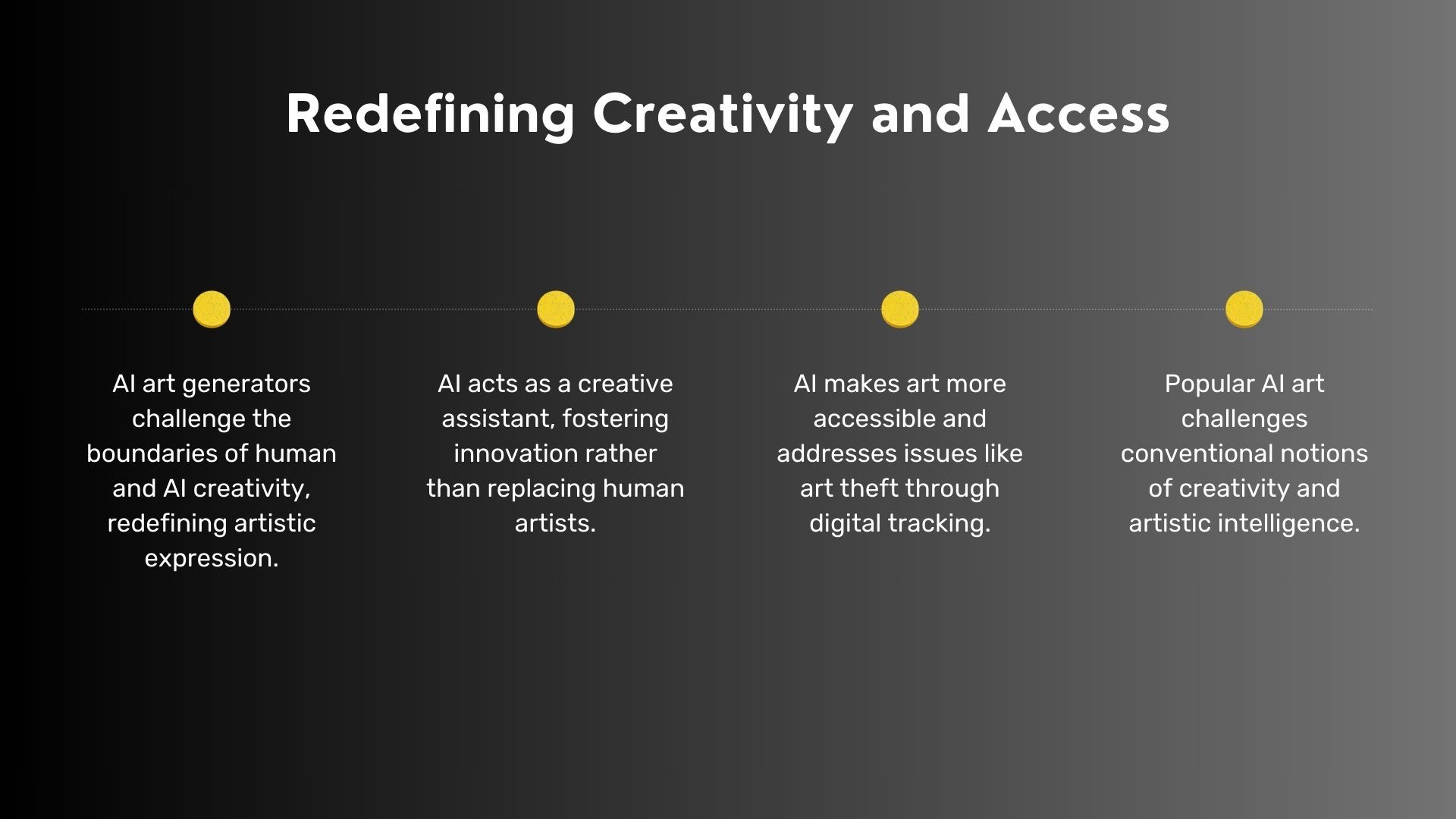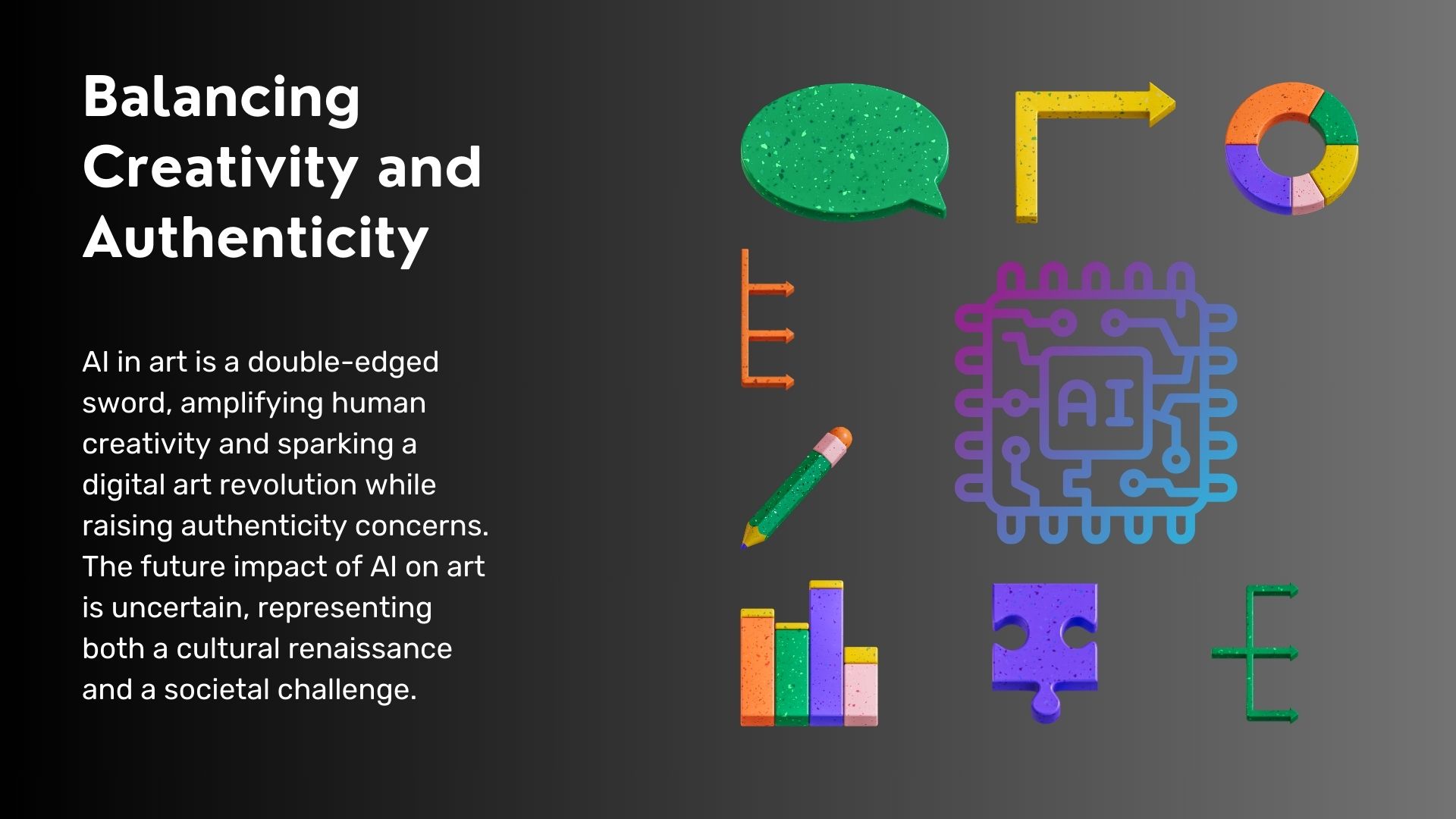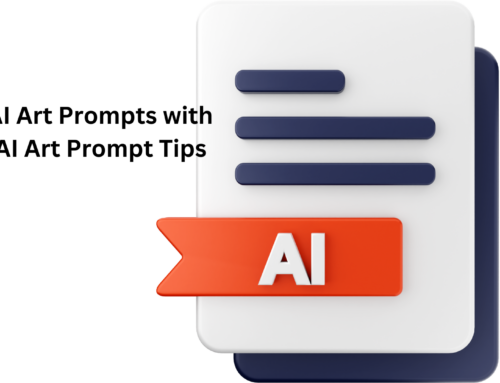Artificial intelligence (AI) is rapidly transforming many aspects of our lives, and the art world is no exception. AI art generators are software programs that can create images, music, and other creative content without any human input. As these tools evolve in sophistication and accessibility, they exert a profound influence on the cultural impact of AI art generators, contributing to a redefinition of artistic expression in our societal narrative.

Bridging the Gap Between Humans and Artificial Intelligence
The cultural and societal impacts of AI art generators extend far beyond the canvas, for they offer a glimpse into the transformative potential of artificial intelligence. As AI develops, the ability of AI-generated pieces of art to blur the lines between human creativity and artificial ingenuity becomes more evident. In the world of AI, it’s not just visual art; even AI chatbot conversations can be considered a form of AI-generated art, raising intriguing questions about the nature of artistic expression.
While some may fear that human artists could be replaced by AI programs, it’s important to recognize that AI seems more like an assistant than a usurper. Maybe AI’s true potential lies not in replication but in catalyzing innovation. Furthermore, AI could make art more accessible, bringing it to underserved communities, and addressing issues like stolen art through digital tracking. In this unfolding narrative, popular AI art might make us reevaluate what it means to create and appreciate art, ultimately challenging our understanding of artistic intelligence and the very essence of creativity.
The Cultural Impact of AI Art Generators on Art And Creativity
One of the most significant impacts of AI art generators is that they are democratizing art. In the past, creating art required specialized skills and training. However, AI art generators make it possible for anyone to create art, regardless of their artistic skills or experience. This is opening up the world of art to a wider range of people, and it is leading to the creation of new and innovative forms of art.
AI art generators, though, also raise certain ethical questions. One worry is that AI might be utilized to produce art that is harmful or objectionable. AI might be used, for instance, to produce visuals that promote prejudices or false information. Another issue is the possibility that the emergence of AI-generated art would diminish human creativity and result in a loss of visual and cultural diversity.
Abhi Bavishi, The Founder of AutoDeus Technologies Pvt Ltd (Smartify), emphasizes, “AI art generators have many impacts. They can change cultural identity and traditional art. AI can copy many styles. But it might weaken the emotional power of human art. We should see AI as a tool, not a replacement. Artists can use AI to renew traditional art forms.
AI can help people understand other cultures. It can learn from different art forms around the world. It can create art that mixes traditions. This might help people see a shared artistic heritage. But we must be careful not to misuse any culture’s art.
Job loss in art is a real worry with AI. People say artists might lose their jobs to AI. But creativity is human. AI lacks the emotional depth of human art. We should use AI to help artists, not replace them. New jobs will likely appear in AI art.”

Is the Future of AI Art Generation a Cultural Renaissance or Societal Challenge?
The collision of AI technology and the art world has sparked a profound debate over the future of art generation. It’s as though the Colorado State Fair’s art, with its rich cultural history, is poised at a crossroads. In this ever-evolving world of art, generative AI is introducing both a cultural renaissance and a societal challenge, giving rise to intriguing aspects worth considering:
- AI Doesn’t Replace, It Augments: The impact of AI on art doesn’t replace human artists. Instead, AI tools serve as a powerful extension of an artist’s capabilities, enabling them to explore new horizons and mediums.
- The Digital Art Revolution: The art industry is experiencing a digital transformation, thanks to AI generators. Artists can now use AI in art to create cool digital art, going beyond the old ways.
- AI’s Potential for Cultural Renaissance: AI has the potential to revitalize cultural heritage by introducing fresh perspectives. It can recreate lost works, make art inspired by diverse global traditions, and even reimagine classics in a modern light.
- Societal Challenges in Authenticity: As AI technology becomes more proficient at mimicking artistic styles, questions about originality and authenticity arise. How can we preserve the uniqueness of an artist’s voice in a world where using Artificial Intelligence might effortlessly generate an image that mimics any renowned painter?
- An Artistic Evolution: AI is changing the way we perceive and interact with art. From personalized art recommendations to immersive art experiences, AI is shaping a dynamic and engaging world of art consumption.
- AI’s Role in the Art Industry: The use of artificial intelligence in art isn’t limited to creation alone. AI is revolutionizing art curation, authentication, and even marketing, opening up new avenues for artists and enthusiasts alike.
- The Uncertain Future: As AI continues to advance, the future of art remains uncertain. While AI can help produce art more efficiently, the extent to which it might influence the art world’s dynamics remains an open question.
In the ongoing debate about the future of AI art generation, it’s evident that AI is both a cultural renaissance and a societal challenge. How we navigate this evolving landscape will ultimately determine the impact of AI on the world of art.

Artistic Evolution with Airbrush AI
Airbrush AI represents a revolutionary leap in the world of art, harnessing the power of AI image generators to transform the way artists create and society interacts with works of art. This innovative tool allows artists to generate images with the use of AI, effortlessly blending their own creativity with the capabilities of the AI. Here are five key features and uses of airbrush AI that are reshaping the art landscape:
- Seamless Integration: Artists would find that airbrush AI seamlessly integrates into their creative process, making it an invaluable companion in their artistic journey.
- Precision and Efficiency: With its precision, airbrush AI enables artists to fine-tune every detail, saving time and effort in the production of complex images.
- Diverse Styles: The versatility of this AI tool empowers artists to experiment with a wide range of styles, expanding their imaginary horizons and pushing the boundaries of their creativity.
- Accessibility and Inclusivity: AI-driven image generation democratizes image production, making it more accessible to a wider audience, and fostering inclusivity in the art world.
- Collaborative Potential: Airbrush AI can be used not only by individual artists but also in collaborative projects, facilitating the exchange of ideas and the co-creation of captivating images.






Leave A Comment